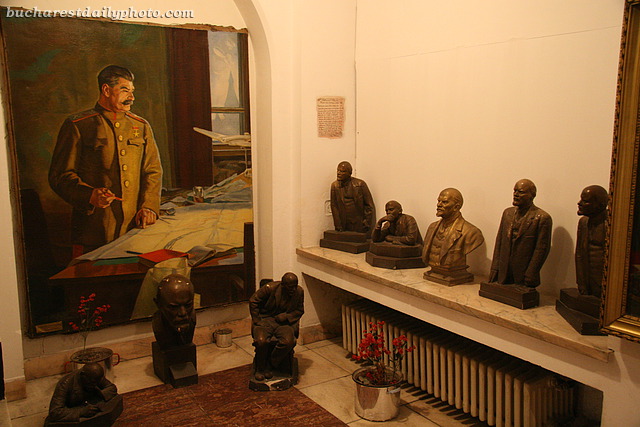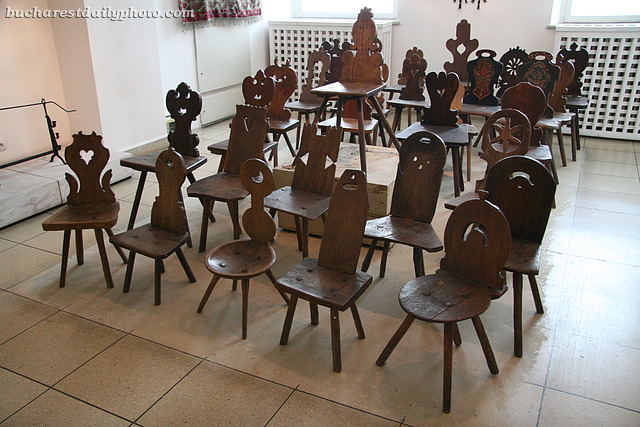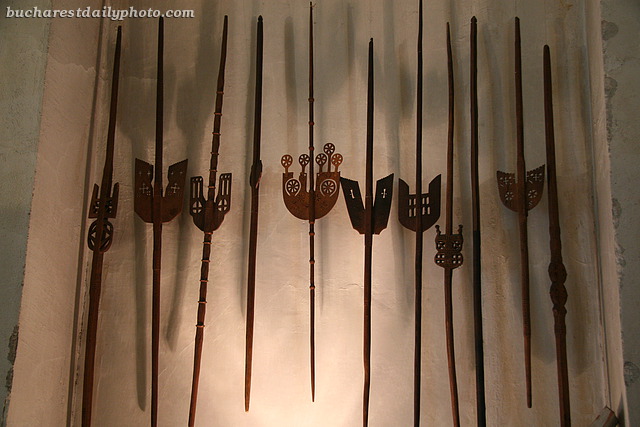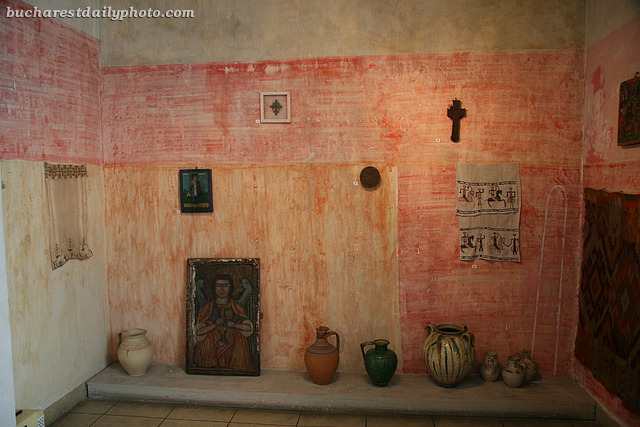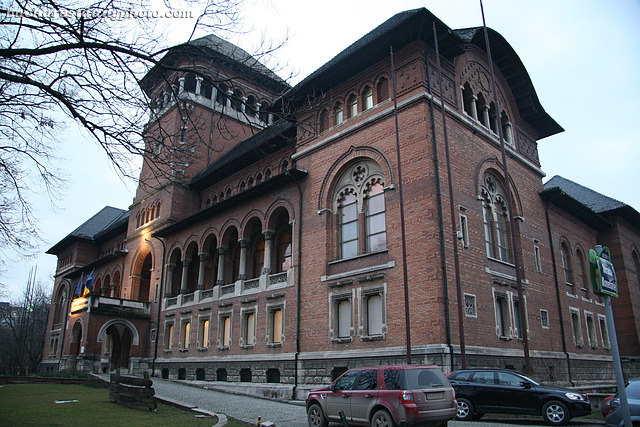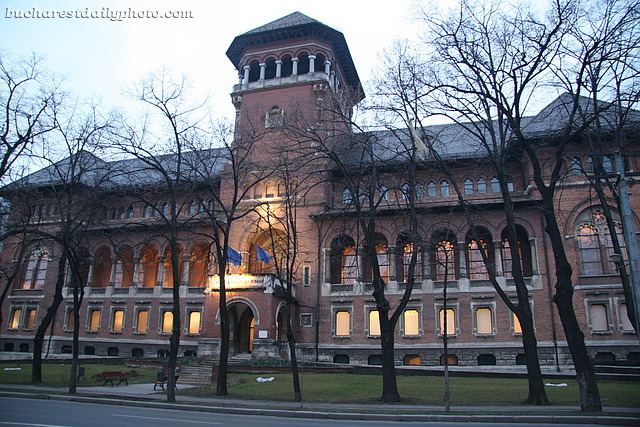In the cellar of the Museum of Romanian Peasant there are two small rooms dedicated to the “collectivization” of agriculture in Romania which took place in the early years of the communist regime. Started in 1949 the project sought to force the peasants to bring their land into collective farms. Aside from the persistent propaganda, violent means like intimidation, beating, arrest and imprisonment were used to convince peasants to join. According to the wikipedia article, by 1962 a total of 96% of the country’s arable surface and 93.4% of its agricultural land had been included in collective structures. To achieve this 80.000 peasants were taken to court, 30.000 of which were judged and found guilty in public trials. The effect of the small rooms is rather chilling. The first room is wallpapered with old newspapers clippings while the second room looks like one used for a party meeting, where “traitors” were brought forward, accused and asked to self-criticize. In the photo you can see the entrance to the first room where one corner is occupied with a collection of busts from that era.
Today is Theme Day at the City Daily Photo community, a monthly event that happens the first day of every month, when all participating blogs will post a picture that relates to the theme day’s description. Today’s theme is: Wood. Click here to view thumbnails for all participants
If you feel tired after walking through the Museum of Romanian Peasant for an hour, you might feel inclined to sit down on the chairs shown in the photograph above. This wouldn’t be advisable, as you might end up being chased around by the army of attendants, who as you can see from the photograph below, have all different kinds of weapons at their disposal 🙂
What makes this museum special is the way the collection is displayed, less like a museum and more like an art gallery. Objects are not behind glass cases but displayed freely and the display information is hand written on pieces of paper or illustrated by sketches. This somehow cuts the distance between the viewer and the objects, making the impact of the displays greater, more personal. It’s certainly different than other museums I’ve been to. The vision belongs to the museum’s first director after 1990, painter Horia Bernea, and to one of his main collaborators Irina Nicolau. Under their guidance the Museum of Romanian Peasant won the the European Museum of the Year Award in 1996, the first museum in Eastern Europe to be granted this honor.
The Museum of Romanian Peasant is one of my favourite museums in Bucharest. It houses, as the name suggests, a large collection of objects used by Romanian peasants: pottery, textiles, traditional costumes, icons and other religious artifacts, pieces of furniture, carpets etc as well as photographs documenting the customs of rural life. Today’s photographs show the red-brick facade of the building. The museum was founded in 1906 under the name of Ethnographic and National Art Museum and was housed temporarily at another location. Construction to the present building started in 1912, was stopped in 1916 and restarted in 1932. It was completed in 1941, 29 years after it was started. The building is the project of architect Nicolae Ghika Budeşti who designed it as an illustration of the neo-Romanian style, very popular in Bucharest at the beginning of the 20th century. In 1953, the communists “liberated” the building, turning it into a museum dedicated to the history of the Communist Party and sending the collection away. In 1990, after the Romanian Revolution, the collection returned home.
